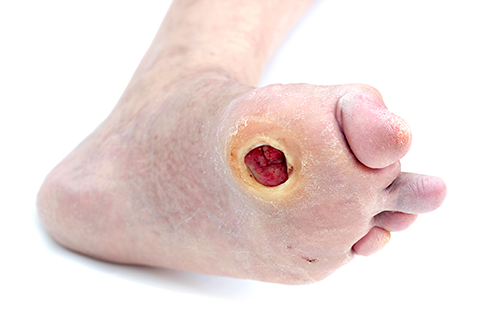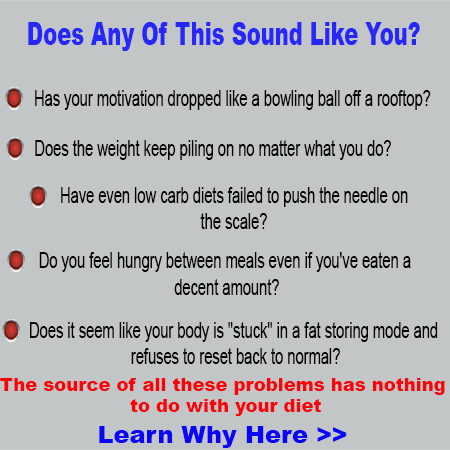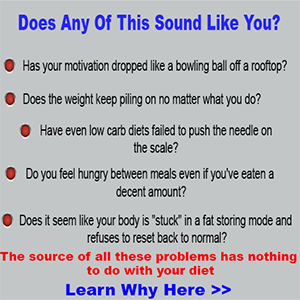Healthy Blood Sugars: Everything You Need To Know About “Healthy Blood Sugar Levels.”
Table of Contents:
What Are Normal Blood Sugar Readings
Dangers Of Poor Blood Sugar Control
How To Maintain A Healthy Blood Sugar Range
It has been published that diabetes and what is called metabolic syndrome in the 21st century may be one of the largest epidemics to date.
Did you know that around 1.5 million Americans alone are diagnosed with diabetes every single year? 
It is also projected that by year 2050, one in three Americans will be diagnosed with diabetes.
Thanks to unhealthy lifestyle factors such as lack of physical activity, increases in body weight, and a poor diet, there is an increase in the risk of developing unhealthy blood sugar levels that can cause a path to a number of major health issues.
Recent research had indicated that those who are diagnosed with diabetes will increase by 54%.
It will jump to 54.9 million Americans by the year 2030, and deaths will jump to 38%.
We all have a real reason to be worried about this. The American population has been raising their hand and saying they are concerned about diabetes and what they can do to prevent getting metabolic syndrome or Type 2 diabetes.
Let’s dive into what a healthy blood sugar looks like.
When our bodies are functioning properly and we are being active, eating healthy, avoiding smoking and excess drinking, these numbers I listed are considered a healthy blood sugar level.
When we live an unhealthy lifestyle like I mentioned earlier in this article, our blood sugars may become consistently elevated and this can lead to a host of possible health issues.
When we have normal healthy blood sugars, we convert the carbohydrates we eat to glucose and use it for energy. We can only use this glucose if we have enough insulin or if our bodies are using insulin properly.
When we are consistently putting too much sugar into our body, we can end up with what is called hyperglycemia. This usually develops because there is not enough insulin in the body or the cells become less sensitive to insulin.
The sugar/glucose ends up building up in the bloodstream, and this consistent hyperglycemia might lead to insulin resistance which essentially means the insulin is less sensitive to the cells. This can eventually lead to Type 2 diabetes.
What are Normal Blood Sugar Readings?
Normal blood sugar readings are pretty straight forward, but how we get there or maintain healthy blood sugar readings is the biggest challenge.
Healthy or normal blood sugar levels are usually less than 100mg/dl after not eating for at least 8 hours. After two hours after eating, blood sugar readings should be less than 140mg/dl.
Usually during the day blood sugars tend to be lowest right before a meal. It can be around 70-80mg/dl, but it is not uncommon for some individuals that it might be a little lower than 70 or a little higher than 80mg/dl.
For individuals that have diabetes, the blood sugars readings are a little higher.
Before a meal the blood sugar range should be 70-130 mg/dl. Then 2 hours after a meal it should be less than 180mg/dl.
These are general medical guidelines and as you can see, once you have diabetes your blood sugar readings are going to a little higher.
Dangers Of Poor Blood Sugar Control
The dangers of poor blood sugar control and hyperglycemia starts small and many times go unnoticed. 
It commonly starts with some of the lifestyle decisions I discussed above such as a poor diet, increase in body weight, and lack of physical exercise. Smoking and excess alcohol consumption are also contributing factors to poor blood sugar control.
A term that comes up often with those that are pre-diabetic is something called Metabolic Syndrome.
This is a group of conditions that increase your risk of heart disease, stroke and Type 2 diabetes.
If you have just one of these conditions, it doesn’t mean you have metabolic syndrome. It does mean you have a larger risk of getting a serious disease. As you get more of these conditions, it increases your risk for Type 2 diabetes, heart disease, or a stroke.
Here are conditions that indicate a person has Metabolic Syndrome.
-
High Blood Pressure
-
High Blood Sugar
-
Excess Body Fat Around The Waist
-
High Cholesterol Levels
-
High Triglyceride Levels
Remember I mentioned that hyperglycemia and Type 2 diabetes symptoms start small and often go unnoticed. Well, out of these Metabolic Syndrome conditions above the only one you are going to notice without a blood test is the excess fat around the waist.
Some other signs and symptoms of an unhealthy blood sugar level or range is an increased thirst, higher frequency of urination, fatigue, and even blurred vision.
A person may also experience lightheadedness, headaches, nausea, dry mouth, and general weakness.
These are all symptoms and signs that may be mild and we dismiss them as nothing, but in actuality could be signs that we have poor blood sugar control and no longer are maintaining a healthy blood sugar range.
If we don’t address these subtle signs, it can lead to more serious problems that can develop from the persistent hyperglycemia.
These more serious problems include:
-
Blindness (Vision Loss)
-
Kidney Disease
-
Erectile Dysfunction
-
Foot Ulcers (see my personal story about this below)
-
Numbness/Tingling- Permanent nerve damage
-
Wounds that take forever to heal
-
Increased risk of a stroke
-
Increased risk of a heart attack
These more serious side effects are avoidable if you follow a lifestyle that helps you maintain a healthy blood sugar range.
I do have to tell you a personal story about what it is like when you have one of these more serious diabetes-related health issues.
I was working as an intern for my RD license at a V.A. Hospital and one of my rotations was working with a diabetes specialist. We had a patient come in that kept poor sugar control and didn’t do the things necessary to maintain a healthy blood sugar level.
 He was in the office to debride part of his foot. He had originally developed a foot ulcer and because he didn’t work on keeping a healthy blood sugar range he also developed nerve damage.
He was in the office to debride part of his foot. He had originally developed a foot ulcer and because he didn’t work on keeping a healthy blood sugar range he also developed nerve damage.
The end result of these two complications is that the tissue at the end of your foot starts to die off.
He had already lost his toes to his lifestyle decisions and was there in the office to have more of the dead tissue cut off his foot.
I have to say this is probably still today one of the most unsettling things I have ever seen. The dead tissue looked like black charcoal and the doctor just sliced away at it with a knife until he got to fresh healthy tissue.
I think the part that was most disgusting was the smell of the dead tissue.
This will always stick with me. I felt sorry for this individual because the doctor told him that if he didn’t work on eating better and controlling his blood sugars, he would eventually lose his entire foot.
The end result of poor blood sugar control is not a good one and can be avoided if we make better lifestyle decisions.
How To Maintain A Healthy Blood Sugar Range
Now that we know what the worst of the worst looks like, let’s discuss how to maintain a healthy blood range so that we never experience these types of symptoms.
I have mentioned “Lifestyle choices” a few times during this article, and this is the best way to healthy blood sugar levels.
Here are some tips on controlling blood sugar:
1. Maintain A Healthy Body Weight.
Losing excess body fat especially around the waist promotes healthy blood sugar levels and has been shown to reduce the risk for developing diabetes. As little as a 7% reduction in excess fat may decrease the risk of developing diabetes by as much as 58%4.
One thing you can aim for as a benchmark is your waist measurement. A measurement of 35 inches or more for women and 40 inches for men is associated with the development of insulin resistance and high blood sugars.5
2. Adopt A Regular Exercise Schedule.
Not only can a consistent exercise program help to lose excess weight, it can also increase insulin sensitivity. When you have improved insulin sensitivity, this means your cells are better able to use the sugars in your bloodstream and it isn’t accumulating to a hyperglycemia level.
3. Control The Carbs You Eat
When we eat too many carbs, this can develop into problems with insulin function that causes glucose levels to rise. A recommendation to controlling carb intake is to follow a food exchange system, or count carbs according to the American Diabetes Association (ADA).6 When following these methods, it can help you plan your meals and further improve healthy blood sugar levels.7,8
Other studies show that a low-carb diet helps to reduce blood sugar levels and keep the body from having blood sugar spikes.9,10, 11
| Bonus Content: Learn How To Get A FREE Bottle Of 14 Blood Sugar Balancing Nutrients Here >> |
4. Increase Your Fiber Intake
When you increase fiber intake, it can slow carb digestion and the rate in which sugar is absorbed into the body. This helps to control healthy blood sugar levels since there is less glucose floating around in the blood at the same time.
Soluble fiber has been specifically shown to be able to lower blood sugar levels.12, 13, 14 Try to incorporate foods such as fruits, vegetables and legumes to increase your fiber intake.
While hyperglycemia, metabolic syndrome and Type 2 diabetes have a lot of unwanted side effects and can seriously damage our health, it doesn’t have to be this way.
The seriousness of maintaining healthy blood sugar levels has become more and more important, and why individuals are looking for alternative ways to maintain a healthy blood sugar range.
Following the tips listed above is a great start, but as consumers become more educated they are looking for answers and looking at what they can pair with their improved diet and exercise lifestyle changes.
Since there are so many foods that contain hidden and added sugars, even when you think are you eating healthy you may still be consuming too many hidden sugars.
This is where alternative supplement options and whole food-based nutrients to help support healthy blood sugar levels is helping with keeping the body in a healthy blood sugar range.
Nutrients such as Cinnamon, Bitter Melon, Gymnema Sylvestre and Cayenne Pepper to name just a few, are nutraceuticals that individuals are learning more about to regulate their normal blood sugar levels.
This is one of the fastest growing nutraceutical markets because individuals are learning just how important combining these types of nutrients in a supplement form along with their lifestyle changes is benefiting their health.
On the next page you can read more about 14 specific Blood Sugar Balancer nutrients, and how they can help to maintain normal healthy sugar levels.
LIKE THIS CONTENT?
Join over 60 thousand other F.A.S.T. free-thinkers taking control of their health!
Get started and grab Your FREE 5 Blood Tests That Predict Heart Disease Better Than Cholesterol Guide!
Plus, we will send you cutting edge health news, therapies and daily strategies to maintain an optimal health status!

References:
1. https://www.webmd.com/diabetes/guide/normal-blood-sugar-levels-chart-adults
2. https://www.mayoclinic.org/diseases-conditions/metabolic-syndrome/symptoms-causes/syc-20351916
3. https://www.medicalnewstoday.com/articles/249413
4. https://www.ncbi.nlm.nih.gov/pmc/articles/PMC1282458/
5. http://care.diabetesjournals.org/content/30/6/1647.full
6. http://care.diabetesjournals.org/content/31/Supplement_1/S61
7. https://www.ncbi.nlm.nih.gov/pubmed/24622717
8. https://www.ncbi.nlm.nih.gov/pubmed/9710660
9. https://www.ncbi.nlm.nih.gov/pubmed/26965765
10. https://www.ncbi.nlm.nih.gov/pubmed/15331548
11. https://www.ncbi.nlm.nih.gov/pmc/articles/PMC1325029/
12. https://www.ncbi.nlm.nih.gov/pubmed/11893482
13. https://www.ncbi.nlm.nih.gov/pubmed/10731498
14. https://www.ncbi.nlm.nih.gov/pubmed/2194788
15. https://pophealthmetrics.biomedcentral.com/articles/10.1186/s12963-018-0166-4
About Jayson Hunter & Jaylab Pro

Jaylab Pro was founded by Registered Dietitian Jayson Hunter. Jayson has been recognized as one of America's foremost weight loss experts by America's Premier Experts™. He has also been featured in USA Today for this accomplishment. Jayson is also a best-selling author having co-authored multiple books in health & fitness and business growth. Jayson and the Jaylab Pro team are proud to create content that helps improve the lives of millions of people around the world. We hope you enjoy it just as much as others have.
 If you order a JayLabPro SmartShip product or any Combo Package, we will automatically ship you a new supply of the product or products you have ordered every month, starting 30 days after your initial order is shipped, and continuing until you cancel. The credit card you are using today will be billed the lowest available price for those product or products when your order is shipped, but shipping will be FREE. You may log into your customer account or call our customer service department toll-free at 1-888-9GETPRO (1-888-943-8776) between the hours of 8am – 9pm EST Mon-Fri to cancel future shipments, customize the timing of your shipments, or change the credit card used for billing.
If you order a JayLabPro SmartShip product or any Combo Package, we will automatically ship you a new supply of the product or products you have ordered every month, starting 30 days after your initial order is shipped, and continuing until you cancel. The credit card you are using today will be billed the lowest available price for those product or products when your order is shipped, but shipping will be FREE. You may log into your customer account or call our customer service department toll-free at 1-888-9GETPRO (1-888-943-8776) between the hours of 8am – 9pm EST Mon-Fri to cancel future shipments, customize the timing of your shipments, or change the credit card used for billing.











